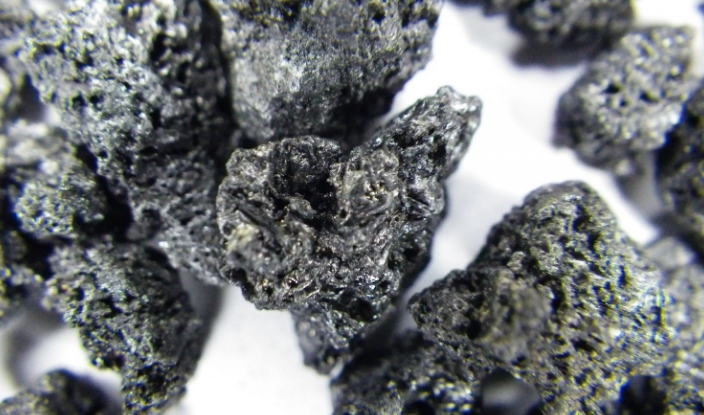
Anthracite is widely known as a clean, carbonaceous mineral that can be used for a multitude of purposes. It is commonly used in refractory castables, furnaces and more.
Anthracite is significantly reduced in ash after chemical and physical activation. When comparing N2/77K isotherms for weight loss, there are significant differences between the pre- and post-KOH treatment.

Anthracite's carbon content varies, ranging between standard grades used in power plants to higher and ultrahigh grades. These are used in metallurgy because they have the highest coalification, highest energy and carbon count and lowest impurities (ash and volatiles). High- and ultra high-grade anthracite has a much higher relative density and is more dense than standard-grade.
Carbon raisers, or additives of carbon to steel smelting and cast are manufactured from the anthracite raw coal. The anthracite is calcined at 1300 degrees in a high-temperature furnace. This grade can range from 80% minimum to 95% fixed. It is a substitute for refinery coke or stone grinds and its price is much less than them. It has a higher carbon content and lower sulfur than petroleum coke. As a result, it's a good choice for producing aluminium. The cost of electricity is also reduced by reducing the thermal stresses and shocks on carbon-type electrodes.
Ashes are the non-combustible portion of coal. Ash is a non-toxic mineral that contains calcium, magnesium, potassium, and sulfur. Ash from coal is useful in making fertilizer and concrete. But it's important to know that the ash also causes harm to the environment.
The low content of ash in anthracite makes it a good refractory material for applications requiring high temperatures. It is safer, and it's more eco-friendly because of its low ash. It is also a reliable and safe option in foundry because of its low sulfur content.
Shamokin offers a complete line of products with low sulfur content for the Hot Metals Industry. There is a wide range of pelletized carbons made from graphite or calcined coal. Its products meet all the specifications required by steel mills, foundries, and other industries.
The strength of anthracite calcined coal is a major benefit. It is more resistant to high temperatures and stronger than standard anthracite. This characteristic makes it a valuable material for metal production. It is used in the cathode in aluminium and nonferrous metals smelting. The carbon is added to steel casts.
Also, it is useful as a cathode and lining material for graphite furnaces. The small, consistent pores make it easier to create a matrix of graphite. This ensures that the cathode is able to meet idealized properties such as conductivity, chemical resistance.
Since medieval times, anthracite has been mined and burned in the southwest of Wales as a fuel for domestic use. This fuel burns very cleanly, and it delivers an incredible amount of energy for every pound. It is a perfect domestic heating source. You can use it in hand-fired and automatic stoves. The ingredient is used to make charcoal briquettes.
Anthracite has spent more than 350 million underground years, and therefore contains the most carbon. It also has the fewest impurities. It burns with a short, blue flame and produces little soot. As a fuel for domestic appliances, it is commonly used in automatic stoker stoves as well as hand-fired ovens. The fuel can also be used in blast furnaces for sintering or direct injection.
The activation of activated coals derived from anthracite is controlled by both physical and chemical means. The best conditions for the activation will determine the amount of graphitization. The graphs of the anthracite-activated coals' adsorption isomerism curves reveal that surface specific area increases when activator is increased.
For the elemental and proximate analyses, four raw types of Korean anthracites were used to test their reactivity. The proximate analysis consisted of volatile matter, carbon fixed, and the ash content. The elements were measured using an elemental analyser (FlashSmartTM from PerkinElmer Waltham MA) to determine the carbon, hydrogens, oxygens, nitrogens, and sulfur. As well as the adsorption and thermal weight measurements, raw anthracite sample were also subjected for a weight test.

Write a Message